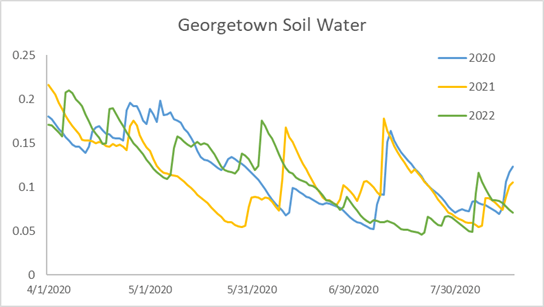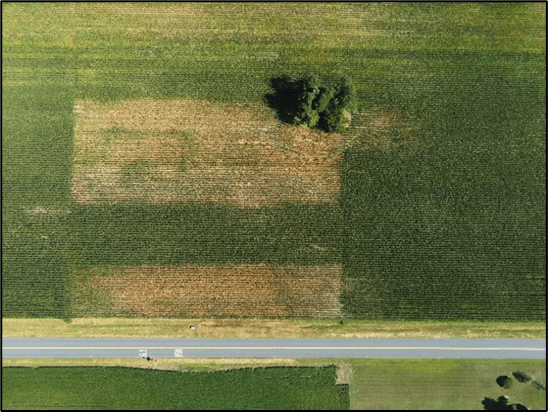Jarrod O. Miller, Extension Agronomist, jarrod@udel.edu and James Adkins, Agricultural Engineer, adkins@udel.edu
It has been drier through the month of July in Georgetown than it has been the last two years (Figure 1). While we may have similar soil moisture contents from 2020-2022 at this point in August, we missed a lot of grain fill in fields without irrigation.
Little rainfall has resulted in very dry soils and is causing rainfed fields to reach maturity faster (Figure 2). That also means our irrigated fields won’t be far behind. Warmer temperatures at night may have also caused some tipback in fields. With cooler weather this week, it may be a good time to walk fields and check their condition prior to harvest. Refresh your memory on checking maturity on the Delaware Agronomy Blog: https://sites.udel.edu/agronomy/2020/08/20/checking-for-corn-maturity/

Figure 1. Soil moisture was drier in Georgetown over the month of July than the past two years.

Figure 2. Corn at our irrigation research farm is already drying down under our rainfed plots.
